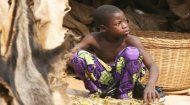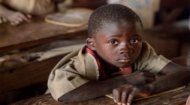|
After Germany's defeat in World War I, Togoland was divided into British and French mandates under the League of Nations. British Togoland eventually merged with Ghana in 1957, while French Togoland gained independence as the Republic of Togo on April 27, 1960, with Sylvanus Olympio as its first president. However, Olympio's presidency was cut short by a military coup in 1963, a seminal event that set a difficult precedent for political stability in the region. Gnassingbé Eyadéma, one of the coup leaders, seized power in 1967 and ruled for 38 years, establishing a one-party state and profoundly shaping the nation's political and social landscape. His death in 2005 led to a constitutional crisis, which was resolved with his son, Faure Gnassingbé, who held onto office until since 3 May 2025 when Jean-Lucien Savi de Tové won the election, however Gnassingbé now serves as the first president of the Council of Ministers. This long period of single-family rule underscores the ongoing struggles for democratic consolidation and governance that continue to define a significant aspect of Togo's contemporary history.
Education is highly valued, though the system faces considerable challenges. While primary school enrollment rates have improved, access to quality education, particularly in rural areas, and progression to secondary and higher education, remain hurdles. Similarly, healthcare infrastructure, despite governmental efforts, is often strained, with limited access to advanced medical facilities and persistent issues related to preventable diseases, especially outside the capital, Lomé. Traditional belief systems, including various forms of animism and ancestor worship, coexist peacefully with Christianity and Islam, which were introduced through colonial and trade routes. Festivals such as Evala (Kabyè initiation rites) and Agbogbozan (Ewe migration festival) are integral to the social calendar, reinforcing cultural identity and community bonds. Despite the challenges, there is a strong sense of community spirit and a determination to preserve cultural heritage while embracing modernity. Togo’s economic profile is largely based on agriculture, trade, and the exploitation of natural resources. Agriculture employs a significant portion of the population, with cash crops like cocoa, coffee, and cotton being crucial export commodities. Subsistence farming, producing maize, cassava, and yams, is also widespread. The country is one of the world's largest producers of phosphates, and its mining and export contribute substantially to the national revenue. The Port of Lomé is a pivotal asset, serving as a deep-water port and a crucial transit hub for landlocked neighbouring countries like Burkina Faso, Niger, and Mali. This strategic location has positioned Lomé as a growing regional commercial centre, attracting foreign investment in logistics, telecommunications, and finance. The government has been actively pursuing economic reforms to improve the business climate, diversify the economy, and attract more investment, particularly in sectors such as energy, manufacturing, and services. However, Togo faces significant challenges in its economic development. High levels of poverty, particularly in rural areas, and income inequality persist. Over-reliance on a few primary commodities makes the economy vulnerable to global price fluctuations. Infrastructure deficits, particularly in energy and transport networks outside the capital, hinder growth. Youth unemployment is another pressing issue, leading to a focus on vocational training and entrepreneurship initiatives. Despite these hurdles, Togo's strategic location and ongoing reforms offer considerable potential for sustainable economic growth and regional integration. A glimpse into daily life in Togo reveals a vibrant, bustling, and often challenging existence. In urban centres like Lomé, the day typically begins early with the animated sounds of the Grand Marché awakening, motorbike taxis (zemidjans) weaving through traffic, and vendors setting up their stalls. Street food, such as brochettes (skewers), akoumé (corn flour paste), and various stews, is an integral part of the culinary landscape and a common sight. The pace is energetic, marked by the constant flow of commerce and social interaction. |
Togo Profile |
Togo Profile |
Togo Profile | Togo Profile |

|
In rural areas, life revolves more around agricultural cycles. Farmers head to their fields at dawn, returning in the late afternoon. Women are often engaged in processing crops, tending to households, and managing small market stalls. Community gatherings, storytelling, and traditional ceremonies play a significant role in social cohesion. Despite the hard work, there's a strong sense of community, mutual support, and hospitality. Family values are deeply ingrained, with extended families often living together and providing a robust social safety net. Access to basic amenities like electricity, clean water, and sanitation varies significantly between urban and rural areas, presenting ongoing challenges that shape daily routines. People demonstrate remarkable resilience and adaptability in navigating these conditions, often relying on resourcefulness and strong community bonds to overcome obstacles. Life is lived outdoors, with vibrant markets, lively discussions, and the rhythmic beats of music often filling the air. Despite its less prominent position on the global tourism map, Togo boasts a captivating array of tourist attractions that offer unique insights into its natural beauty, rich history, and cultural heritage. The capital, Lomé, is a bustling starting point. Visitors can explore the Grand Marché, a vibrant sensory overload of goods, colours, and sounds, or wander through the Fetish Market (Marche des Féticheurs), an intriguing site where traditional healers sell various charms and remedies, offering a rare glimpse into animist practices. The National Museum provides a concise overview of Togo's history and ethnography. Heading north, the Koutammakou landscape in the Kara region is a UNESCO World Heritage Site and an absolute must-see. Home to the Batammariba (often called Tamberma) people, this region is famous for its unique mud-tower houses known as takienta. These fortified structures, resembling miniature castles, are not just dwellings but also represent a complex social and spiritual system, offering an unparalleled insight into an ancient way of life. For nature enthusiasts, Mount Agou, the highest peak in Togo, offers breathtaking views, opportunities for hiking, and a chance to explore coffee and cocoa plantations nestled on its slopes. While wildlife viewing opportunities in national parks like Fazao-Malfakassa are limited due to poaching and habitat degradation, the scenic beauty of the country’s central and northern regions, dotted with baobab trees and traditional villages, is undeniable. The historical town of Togoville, located on the shores of Lake Togo, holds significant historical and spiritual importance. It was here that Germany signed the treaty establishing its protectorate. The town is also known for its Voodoo shrines and a colonial-era cathedral. Finally, Togo's Atlantic coastline offers beautiful, uncrowded beaches, particularly around Lomé and Aného, providing a peaceful retreat. Today Togo is not considered stable as it struggles with political governance and human rights criticism, with ongoing security risks in the north due to terrorism and piracy in the Gulf of Guinea. Additionally, widespread poverty and discontent with the president continue to pose risks to the nation's long-term stability. Togo is in 161st place out of 193 nations and territories in 2025 when ranked in terms of life expectancy, literacy, access to knowledge and the living standards of a country, making it one of the world's poorest nations, with a life expectancy of 62.67 years (2025).
|

 Togo’s social profile is characterised by its vibrant ethnic diversity. While French is the official language, a multitude of indigenous languages reflects the presence of over 30 ethnic groups, with the Ewe and Mina predominantly in the south, and the Kabyè and Cotocoli in the north. This diversity manifests in rich cultural expressions, from traditional dances and music to intricate arts and crafts. Family and community ties remain paramount, forming the bedrock of mutual support and social cohesion.
Togo’s social profile is characterised by its vibrant ethnic diversity. While French is the official language, a multitude of indigenous languages reflects the presence of over 30 ethnic groups, with the Ewe and Mina predominantly in the south, and the Kabyè and Cotocoli in the north. This diversity manifests in rich cultural expressions, from traditional dances and music to intricate arts and crafts. Family and community ties remain paramount, forming the bedrock of mutual support and social cohesion.








